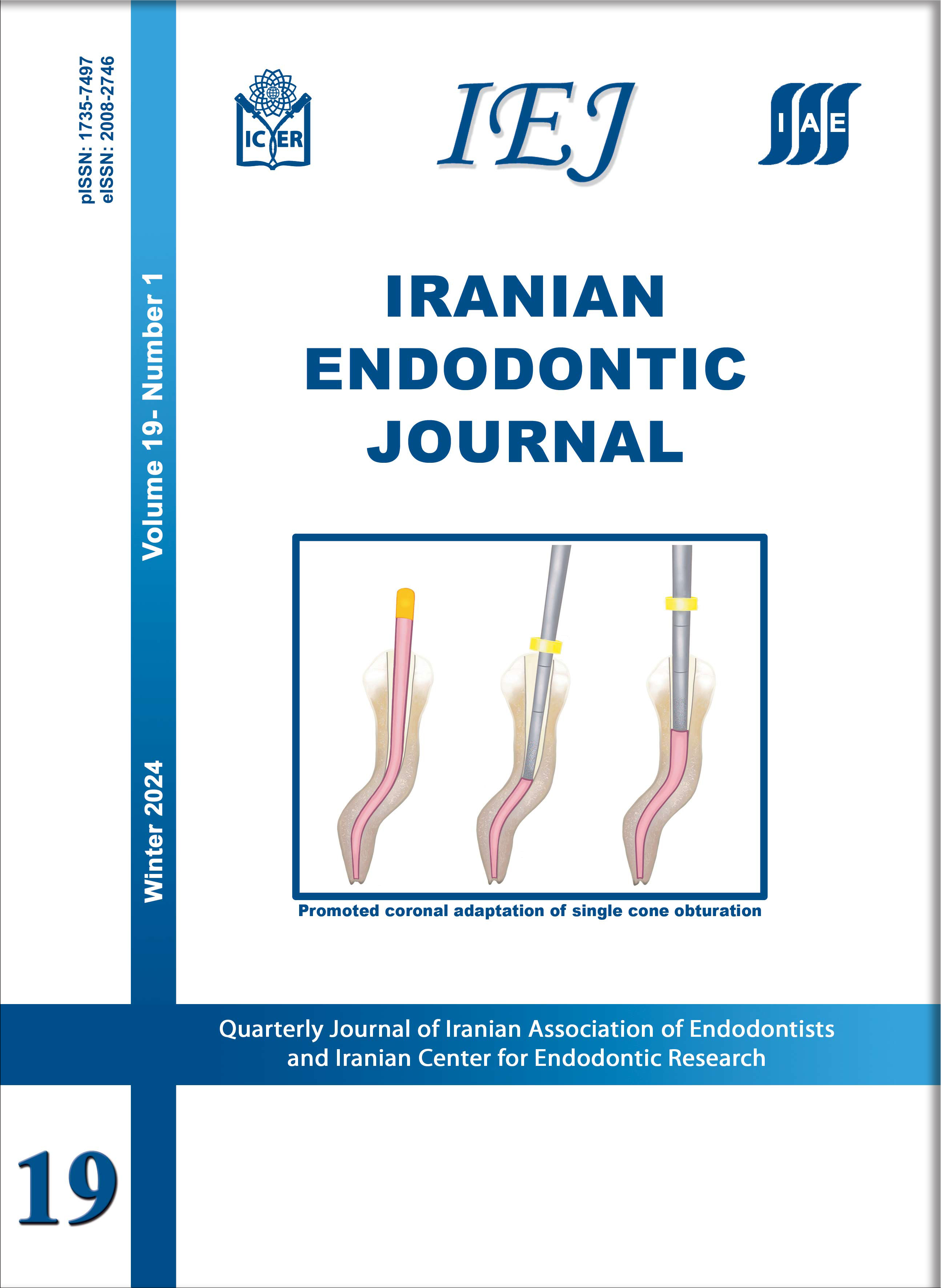Comparison of Pulpotomy with for Mocresol and MTA in Primary Molars: a Systematic Review and Meta - Analysis
Iranian Endodontic Journal,
Vol. 3 No. 3 (2008),
10 July 2008,
Page 45-49
https://doi.org/10.22037/iej.v3i3.769
Introduction: There are various studies looking at the effects of formocresol (FC) and mineral trioxide aggregate (MTA) on pulpotomy of primary molars. This is a systematic review of literature comparing the success rates of MTA and FC in pulpotomy of primary molars. Materials and Methods: The study list was obtained using PubMed, EMBASE, Scopus, Science Citation Index, Iran Medex, Google Scholar, the Cochrane Library, and also some hand searches contains through dental journals approved by the Iranian Ministry of Health. Papers which met the inclusion were accepted. The quality of studies for the meta-analysis was assessed by a series of validity criteria according to Jadad's scale. Eight qualified studies met the criteria. Terms of clinical outcomes and radiographic findings were evaluated in all studies to assess clinical success and root resorption. Fixed model was applied to aggregate the data of homogenous studies. A random effect model was carried out for measuring the effect size of heterogeneous studies. Results: The overall clinical and radiographic success rates based on the data suggested that MTA was superior to FC (P=0.004) with the Odds Ratio=3.535 and 95% confidence interval (1.494-8.369). Conclusion: Primary molars pulpotomy with MTA have better clinical and radiographic success rates than FC.




